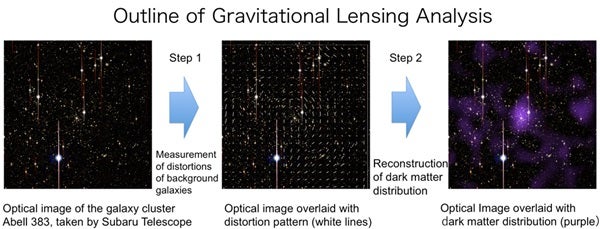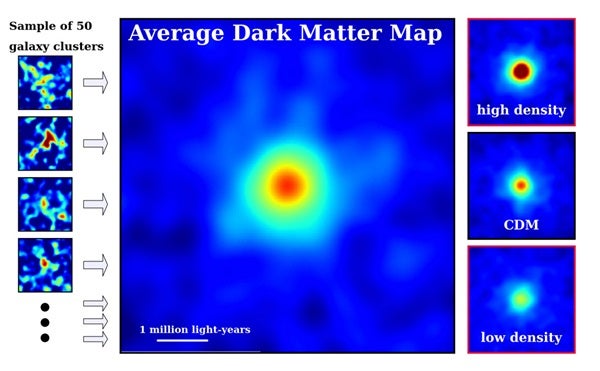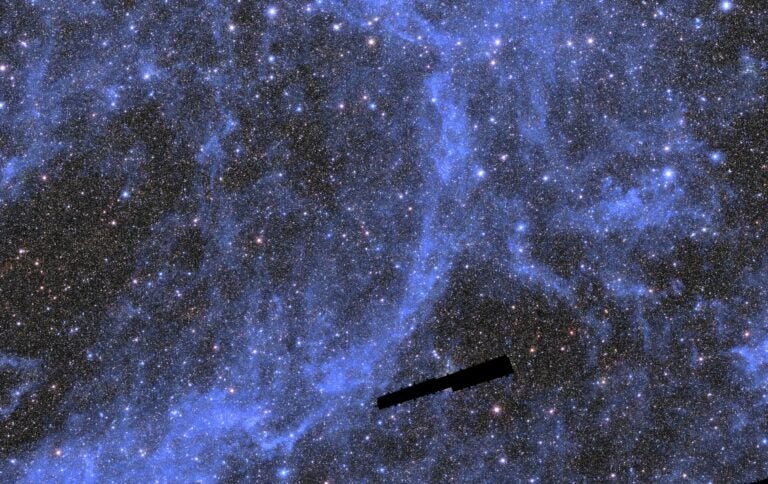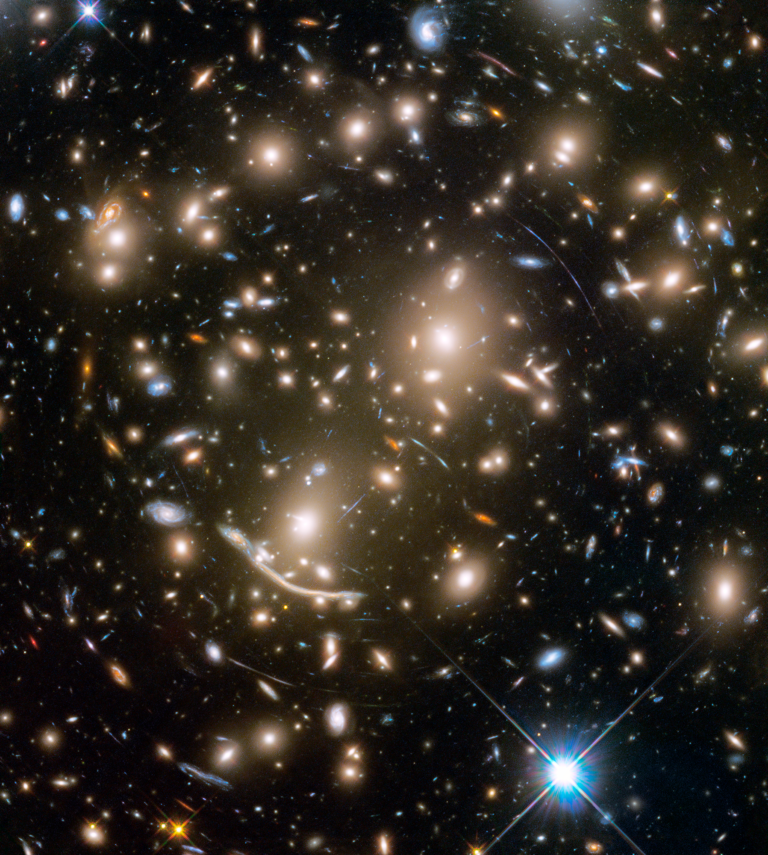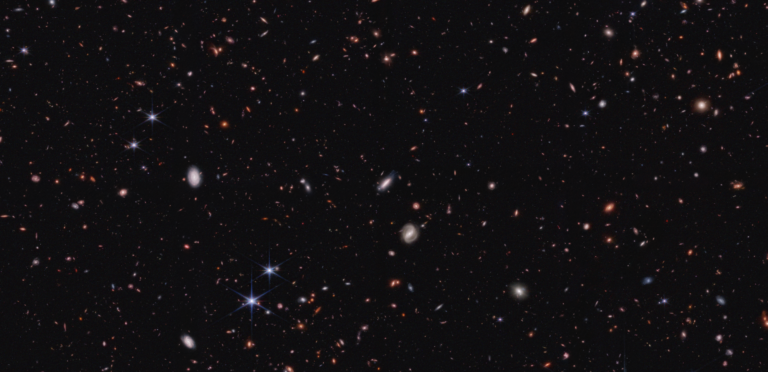Few scientists seriously doubt the existence of dark matter, which researchers discovered almost 80 years ago. Nevertheless, astronomers cannot directly see dark matter in the night sky, and particle physicists have not yet identified a dark matter particle in their experiments. “What is dark matter?” is a big unanswered question facing astronomers and particle physicists, especially because invisible dark matter probably makes up 85 percent of the mass of the universe.
The team, led by Nobuhiro Okabe of Academia Sinica, Taiwan, and Graham Smith of the University of Birmingham, England, used the Subaru Prime Focus Camera (Suprime-Cam) to investigate the nature of dark matter by measuring its density in 50 galaxy clusters, the most massive objects in the universe. “A galaxy cluster is like a huge city viewed from above during the night,” said Smith. “Each bright city light is a galaxy, and the dark areas between the lights that appear to be empty during the night are actually full of dark matter. You can think of the dark matter in a galaxy cluster as being the infrastructure within which the galaxies live.” The team wanted to use a large sample of galaxy clusters to find out how the density of dark matter changes from the center of a typical galaxy cluster to its outskirts.
CDM theory describes how dark matter in galaxy clusters changes from its dense center to its lower-density edges in two ways. One is a simple measure of the galaxy cluster’s mass, the amount of matter that it contains. The other is a concentration parameter, which is a single measurement of the cluster’s average density, how compact it is. CDM theory predicts that central regions of galaxy clusters have a low concentration parameter while individual galaxies have a high concentration parameter.
The team combined measurements from observations of 50 of the most massive known galaxy clusters to calculate their concentration parameter. The average mass map is remarkably symmetrical with a pronounced mass peak. The mass density distribution for individual clusters shows a wide range of densities. The researchers found that the density of dark matter increases from the edges to the center of the cluster, and that the concentration parameter of galaxy clusters in the near universe aligns with CDM theory. Past research based on a small number of clusters found that they had large concentration parameters and did not conform to CDM theory. In contrast, measurement of the average concentration parameter from a large number of clusters yielded a different result, which supports CDM theory. Okabe commented on the team’s findings, based on a larger sample of galaxy clusters: “This is a very satisfying result, which is based on a very careful analysis of the best available data.”
What does the future hold for the team’s continued research on dark matter? Smith noted, “We don’t stop here. For example, we can improve our work by measuring dark matter density on even smaller scales, right in the center of these galaxy clusters. Additional measurements on smaller scales will help us to learn more about dark matter in the future.”
Team member Masahiro Takada of the Kavli Institute for the Physics and Mathematics of the Universe at the University of Tokyo is also excited about the future: “Combining lensing observations of many galaxy clusters into a single measurement like this is a very powerful technique. Japanese astronomers are preparing to use Subaru Telescope’s new Hyper Suprime-Cam (HSC) to conduct one of the biggest surveys of galaxies in human history. Our new results are a beautiful confirmation of our plan to use HSC for gravitational lensing studies.”

